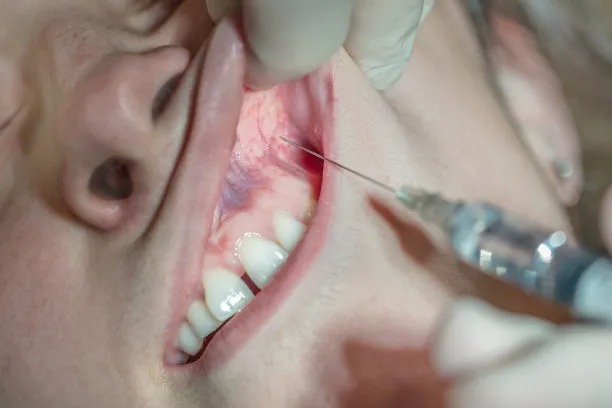Essential Guidelines and Precautions to Follow After Receiving a Dental Filling for Optimal Oral Health
Summary: After receiving a dental filling, following essential guidelines and precautions can significantly impact your oral health. This article outlines four critical areas to consider: managing dental pain, understanding dietary restrictions, practicing proper oral hygiene, and the importance of follow-up visits. Each section is designed to provide valuable insights that will ensure you have a smooth recovery and maintain the longevity of your dental filling. By adhering to these guidelines, you can minimize discomfort and maximize the benefits of your dental treatment.
1. Managing Pain and Discomfort Effectively

After receiving a dental filling, some patients may experience temporary pain or sensitivity in the treated area. This discomfort is typically manageable with over-the-counter pain relief medications like ibuprofen or acetaminophen. It is essential to follow the dosage instructions on the medication packaging and consult your dentist if the pain persists for more than a few days.
Rest is vital post-treatment. While minor discomfort is normal, avoid putting extra pressure on the filling site. Chewing on the opposite side of your mouth can help minimize discomfort and decrease the likelihood of aggravating the filling. If you experience sharp pain or prolonged discomfort, contact your dentist promptly. They can assess the filling and determine if any adjustments are necessary.
In some cases, you may experience a reaction to the dental materials used. If your sensitivity to hot or cold persists, general discomfort increases, or swelling occurs, its crucial to seek professional advice. Early intervention can prevent more severe complications and ensure the successful longevity of your filling.
2. Understanding Dietary Restrictions for Healing
Following your dental filling, it is advisable to avoid certain foods and beverages that could compromise your healing process. Hard, crunchy, or sticky foods may dislodge the filling or cause discomfort. Opt for soft and gentle foods until your mouth adjusts to the filling. Foods like yogurt, pasta, and well-cooked vegetables are excellent options during this adjustment period.
Certain beverages can also exacerbate sensitivity. Hot and cold drinks may induce discomfort, so its beneficial to let them cool to a comfortable temperature before consumption. Additionally, sugary drinks can increase the risk of decay around the filling, as the sugar can provide a breeding ground for bacteria. Staying hydrated with water is the best option while healing.
Alcohol consumption should also be avoided shortly after the filling. Alcohol can interfere with pain medications you may be taking, and its dehydrating effects can hinder the healing process. Moreover, waiting for the numbing effects to wear off completely is important before consuming any food or liquid to avoid accidentally biting your tongue or cheek.
3. Practicing Proper Oral Hygiene Post-Treatment
Maintaining proper oral hygiene is critical after receiving a dental filling. Begin brushing your teeth gently but thoroughly, avoiding the filling for the first 24 hours to allow it to set properly. After this period, utilize a soft-bristled toothbrush and a fluoride toothpaste to help protect and keep the filled area clean.
Flossing is equally important, but caution is necessary around the filling. Be gentle and avoid pulling the floss too vigorously, as this could dislodge the filling. Aim to incorporate daily flossing into your routine, focusing on the surrounding teeth to prevent plaque buildup and cavities.
Regular dental checkups play a crucial role in maintaining good oral health. Schedule follow-up appointments with your dentist to monitor the condition of the filling and overall dental health. Your dentist can identify any issues early and provide appropriate interventions to ensure your oral cavity remains in good condition.
4. Importance of Follow-Up Visits to the Dentist
Follow-up visits after receiving a dental filling are an essential component of optimal oral health. These visits allow your dentist to assess the fillings proper placement and monitor for any signs of decay around the filling. Regular checkups help identify any complications that may arise, ensuring your oral health remains a priority.
During a follow-up visit, your dentist may take X-rays to evaluate the integrity of the filling and surrounding structures. This method provides a comprehensive view of your tooths condition, allowing for early intervention if necessary. Preventive care is key to avoiding further dental work down the road.
Effective communication with your dentist is also crucial during these visits. Share any concerns regarding pain, discomfort, or changes in sensitivity so that your dentist can tailor their approach to meet your needs. This proactive engagement significantly contributes to fostering a positive dental experience.
Summary:
Taking the necessary precautions and following essential guidelines after receiving a dental filling is crucial for maintaining optimal oral health. By managing pain, understanding dietary restrictions, practicing proper hygiene, and committing to follow-up care, patients can ensure the longevity and effectiveness of their dental fillings.
This article is compiled by Vickong Dental, and the content is for reference only.



